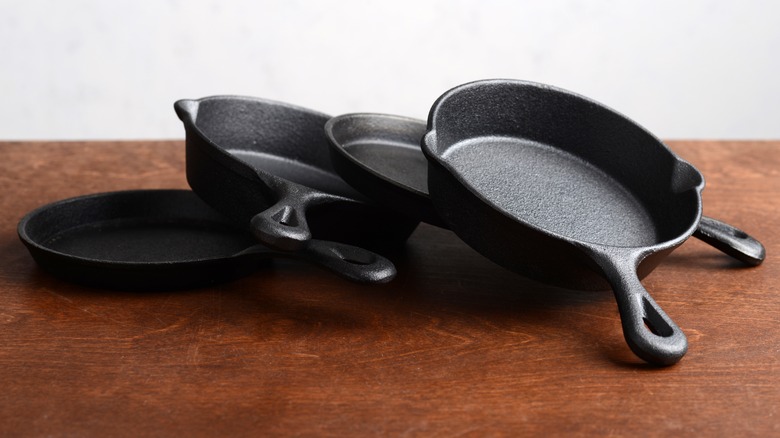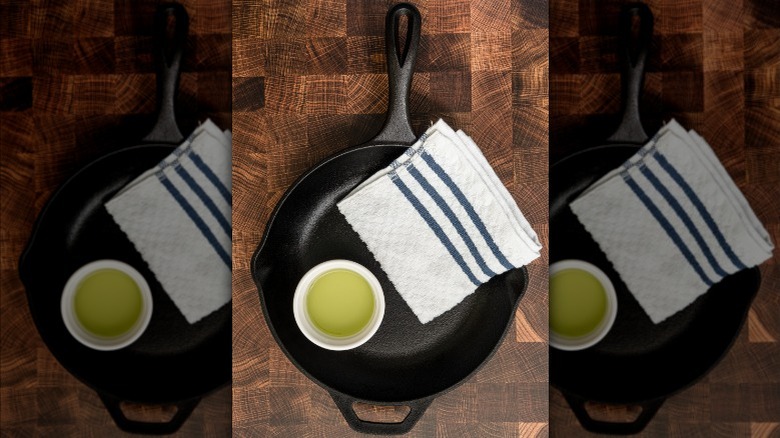The Reason Why Your Old Cast Iron Is Smoother Than Your Newer Ones
Cast iron pans are not only an indispensable kitchen tool, they can often be family heirlooms. Formed as a single piece of iron, a cast iron skillet can last for generations and when properly seasoned can be as non-stick as a traditional non-stick pan.
Perhaps you have a cast iron skillet handed down to you from your grandparents. Maybe you've bought a newer one recently like a Lodge cast iron pan. If you happen to have both side by side, you may have noticed something a bit odd — your older pan might seem a lot smoother than your modern pan. Why is that?
The reason comes down to convenience and speed. In an interview with Food & Wine, Dennis Powell Jr., owner and founder of cast iron cookware manufacturer Butter Pat Industries, notes that pre-1950s, pretty much all cast iron skillets sold in the United States were unseasoned. These pans sat in a sand mold for sometimes up to 48 hours and then were tumbled for a further 24 hours, resulting in a much smoother finish. Lodge Cast Iron is believed to be the first company to start selling pre-seasoned pans in 2002, and other companies followed suit. According to Powell, Jr. via Food & Wine, these modern cast iron pans are made quickly. The texture on newer pans is from that sand mold, which is no longer buffed away during the manufacturing process to quickly produce more product.
What is used to pre-season cast iron skillets?
So what exactly is used to pre-season cast iron pans nowadays? Lodge Cast Iron, for example, applies a layer of soy-based vegetable oil to each pan before sending it out to be sold. On the other hand, boutique cast iron maker Field Company uses grapeseed oil to season their pans. Rest assured that whichever pre-seasoned pan you buy, the oil used is almost assuredly food-grade oil.
Despite Alex Guarnaschelli busting this myth, some say you should never use soap on your cast iron skillet. However, it's a good idea to give a new pre-seasoned cast iron pan a quick wash in warm soapy water to remove any particles from the manufacturing process or dust from when it was sitting out on a store shelf. You might also want to apply an additional layer or two of seasoning before using.
Other than those textural differences, cast iron pans will last a lifetime if properly cared for. Therefore, you'll want to avoid some common mistakes when cleaning your pan, like never putting it in a dishwasher or storing leftovers in it, but other than that, these pans are incredibly resilient. Whether it's grandma's old pan or one you just picked up this week, a cast iron skillet is a cooking workhorse that deserves a place in every kitchen.

